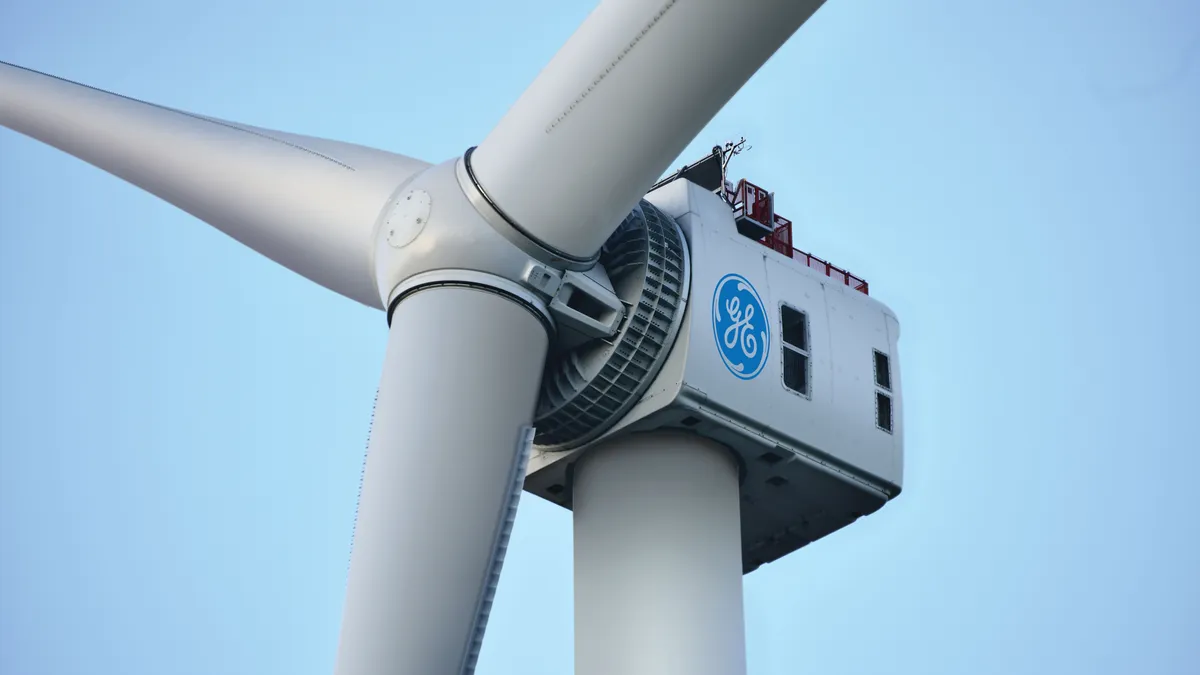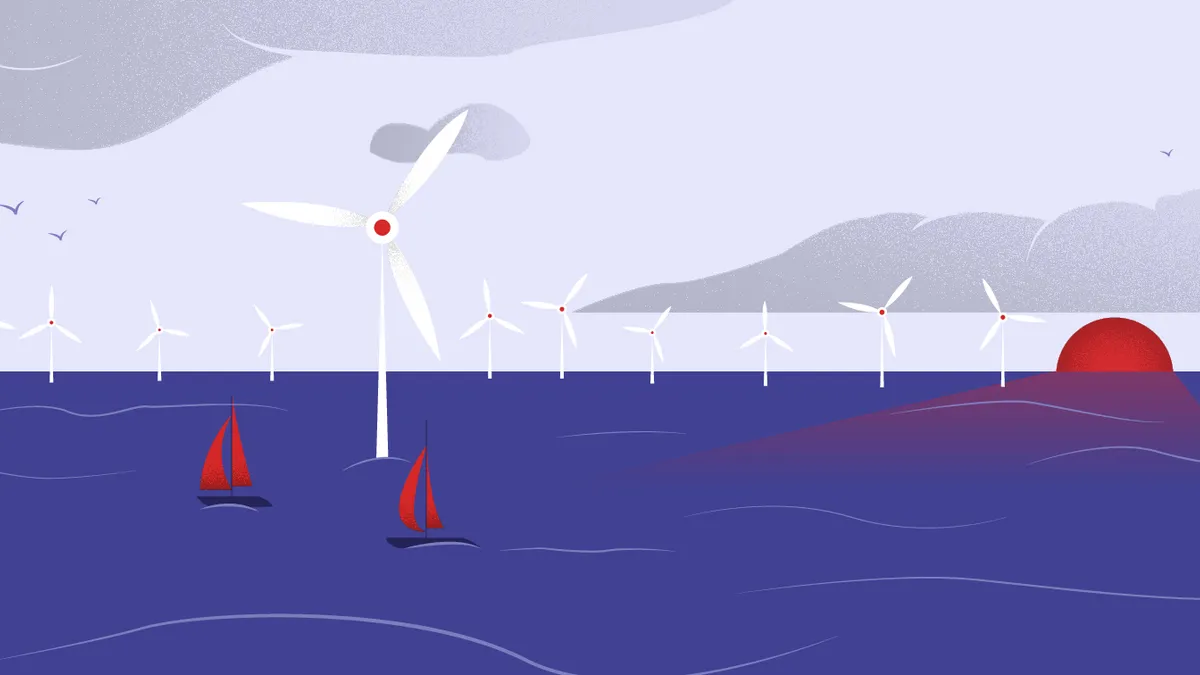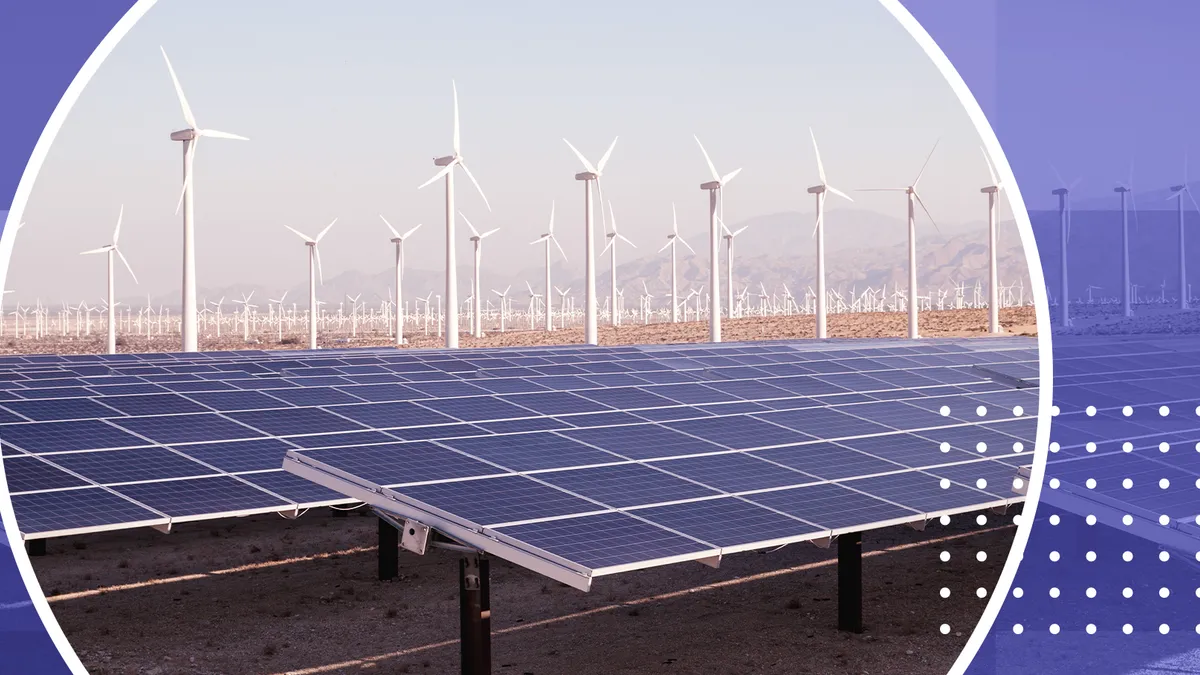UPDATE: Jan. 28, 2021: Vineyard Wind announced on Monday the completion of its technical review of a change in the wind turbines used in its 800 MW offshore project. The developer rescinded its December request with the Bureau of Ocean Energy Management to withdraw its Construction and Operations Plan. Vineyard CEO Lars Pedersen said "no changes" to the BOEM filing are necessary if the project will use GE Haliade-X 13MW turbines instead of 8 to 10 MW turbines.
Dive Brief:
- Vineyard Wind temporarily withdrew its construction and operations plan for its offshore wind project from the Bureau of Ocean Energy Management (BOEM), the developer announced on Tuesday, due to the selection of a turbine generator supplier for the project.
- The first large-scale offshore wind installation in the country will be using GE Renewable Energy's Haliade-X turbines, a selection that prompted the developer to conduct a technical review of the final project design. Vineyard Wind expects the review to last several weeks and intends to restart the BOEM process afterwards without changing the 2023 expected in-service date for the 800 MW project.
- The project was first in a queue of construction and operations plans being considered by BOEM for large-scale offshore wind development in federal waters. Other projects have announced delays this year due to extended permitting timelines announced by federal regulators.
Dive Insight:
Vineyard Wind, a joint venture between Avangrid Renewables and Copenhagen Infrastructure Partners, claims buffer time was built into the project schedule, allowing it to stay on track overall, despite the current pause.
According to BOEM's latest permitting timeline, the agency planned to issue an announcement on the construction and operations plan for the project by Jan. 15, and to conclude the project's permitting process by April 15. The timetable has not been updated to reflect the pause in review requested by the developer as of Thursday morning.
Once the federal permitting process restarts, the decision on the construction and operations plan could be issued under the Biden administration. A Vineyard Wind spokesperson said the change in administration was "not a factor" in the recent announcement.
"While the decision to pause the ongoing process was difficult, taking this step now avoids potentially more federal delays and we are convinced it will provide the shortest overall timeline for delivering the project as planned," Lars Pedersen, Vineyard Wind CEO, said in a statement.
BOEM is currently reviewing the letter from Vineyard Wind, an agency spokesperson said. BOEM did not respond to further questions.
GE said its Haliade-X 12 MW turbine is the most powerful offshore wind turbine on the market, double the capacity of the turbines used in the only operational offshore wind farm in the U.S., the 30 MW Block Island project off Rhode Island. In 2019, Ørsted announced it will use GE's Haliade-X turbines to bring 1,220 MW online by supplying its New Jersey and Maryland offshore wind farms.
GE has since uprated its Haliade-X model to 13 MW.
Vineyard's previous filing with BOEM outlined the use of up to 100 wind turbines in its leasing area, ranging from 8 to 10 MW. Using the latest GE model would increase efficiency and require fewer turbines to achieve the 800 MW capacity.
"Wind power technology and innovation continues to rapidly progress, allowing the U.S. to generate more clean, reliable electricity at a lower cost. This collaboration [between GE Renewable Energy and Vineyard Wind] takes the country closer to realizing a once in a generation opportunity that will advance the clean power industry and jumpstart job creation and economic investment along the East Coast," American Wind Energy Association CEO Tom Kiernan said in a statement.
AWEA declined to comment on the delay of the project's permitting.

















